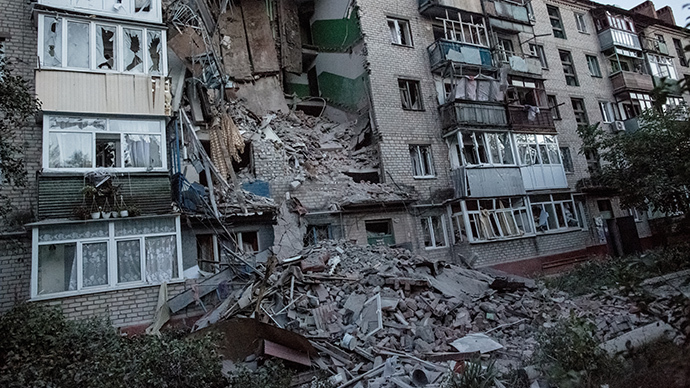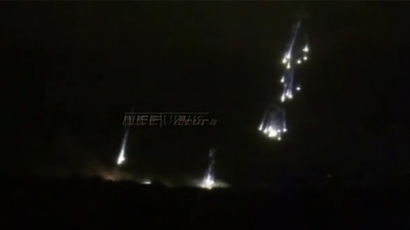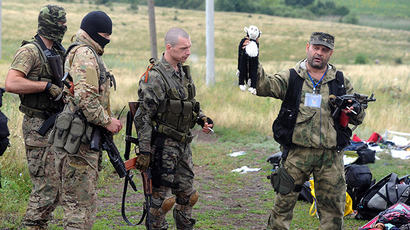Ukraine used phosphorous incendiaries, cluster bombs against cities – Russian military

Ukrainian troops have on many occasions used incendiary weapons and cluster bombs against militia-held cities, acts that are banned under the international law regulating warfare, the Russian military said.
The accusation was voiced on Friday by Major General Viktor Poznikhir, the deputy commander of the chief operations branch of the Russian General Staff. Earlier some media reports claimed that munitions, which are not allowed to be used against civilian targets, were used in eastern Ukraine by the Kiev troops in their assault on armed militias.
According to the general, the Russian military are certain of a number of such attacks by Ukrainian troops. Those include artillery shelling with incendiary shells on June 12 in Slavyansk, on June 24 and June 29 in Semyonovka and on July 7 in Lisichansk. There were also air strikes with incendiary bombs on June 21 in Slavyansk and Kramatorsk and on July 23 in Donetsk and shelling with cluster shells on June 24 in Semyonovka.
“We have sufficient proof that in the cities and villages of Ukraine I mentioned, ammunition based on phosphorus was used,” Poznikhir said. In all those instances characteristic fast-falling clusters of sparks were spotted in the air and massive fires on the ground were reported, proving that those were not illumination flares.
The evidence behind the ministry’s assessment includes eyewitness accounts, injuries sustained by the victims of the attacks and media reports from Ukraine, the Russian general said.
“The incendiaries were used against residential areas where only civilians were present at the time,” Poznikhir stressed. “We believe the Ukrainian side wanted to produce a demoralizing effect on the people and inflict serious damage to communal infrastructure, which would create the conditions for a humanitarian disaster.”
Most of the incidents mentioned by the general happened in or near Slavyansk, once the most defended strongholds of the Ukrainian militia, which for two months held out against the siege by Ukrainian troops. The city was eventually abandoned by militia forces, which regrouped and fortified other Ukrainian cities. Those are currently under Ukrainian attack.
The use of incendiary weapons against civilians or military objects located in civilian areas is forbidden by Protocol III of the UN Convention on Conventional Weapons. Ukraine is a signatory to the protocol. Cluster munitions are prohibited by the Convention on Cluster Munitions, but Ukraine did not ratify that agreement.














